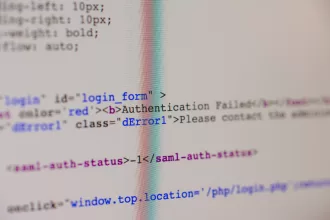Testing the back-end of an application isn’t optional, it’s essential. While front-end tests ensure users see what they expect, back-end validation confirms the system is actually doing what it promises. Without it, you risk data inconsistencies, broken workflows, failed integrations, and silent errors that only show up when it’s too late.
In this scenario, TestBooster.ai becomes your best ally. By automating back-end validation with AI and natural language, you can build smarter, more reliable tests, without writing complex scripts or juggling multiple tools. Those are the 5 five steps you should follow to test the back-end of your application successfully.
1. Ensure that the success seen on screen matches the real success behind the scenes
Just because the interface says “Success” doesn’t mean the operation actually worked. A payment might look confirmed but never reach the processor. A registration might display a success message but fail to create the account in the database. These silent mismatches damage user trust and break business flows.
With TestBooster.ai, you can validate system behavior beyond the UI. Using natural language, you set up a test like: “After submitting the payment, check if the transaction was saved in the database.”
This way, your tests verify both what’s visible and what’s actually happening behind the scenes, catching failures before users do.
2. Define strategic breakpoints to validate back-end processes
Some steps in your system are too critical to skip validation. These are your strategic breakpoints, moments where you must confirm that data, states, or responses are correct before moving forward. Examples:
- Before confirming a payment
- When generating authentication tokens
- After updating sensitive user data
Skipping these checks leads to chain reactions of errors downstream.
TestBooster lets you define these checkpoints effortlessly. You can set instructions like: “Pause after token generation and verify it’s valid before continuing.” Instead of manually coding assertions, TestBooster.ai handles it automatically, giving you control and visibility where it matters most.
3. Verify that data has been correctly written to the database
Data integrity is the foundation of every application. If the database doesn’t store accurate, complete, and consistent data, everything else breaks, analytics, billing, compliance, and the user experience. A report from Experian shows that 95% of businesses struggle with poor data quality, leading to lost revenue and operational issues.
With TestBooster, you can automatically query the database during tests. For example: “Verify the user’s email was saved correctly in the customers table.” TestBooster checks the data and flags discrepancies, helping you spot bugs early and keep your system healthy.

4. Perform API calls during test execution
Modern applications rely heavily on APIs for everything from user authentication to payment processing. If APIs fail silently, or return unexpected data, your entire system can break without you noticing.
TestBooster makes API validations along with your automated tests. Using simple instructions like: “Call the orders API and confirm the returned status is ‘completed’.” You ensure your endpoints are responding correctly, payloads are consistent, and data flows work exactly as intended, without maintaining separate tools for API testing.
5. Check that integrations with external systems have been successfully completed
Your application probably depends on third-party systems: payment gateways, CRMs, analytics tools, logistics providers. If these integrations fail, your users might see “Success,” but nothing will happen on the back-end. That leads to refunds, angry customers, and compliance risks.
With TestBooster, you can validate integrations end-to-end. For example: “After the payment, confirm the provider returned an approval status.” TestBooster.ai ensures all systems, internal and external, stay in sync, giving you confidence that your workflows aren’t just appearing to work but are truly working.
Why Automating Back-end Validation with TestBooster.ai Is a Game-Changer

Back-end issues are among the most expensive and time-consuming to fix in production. Studies show that automated testing can reduce escaped defects by up to 60% and shorten release cycles significantly. But traditional back-end validation often requires manual queries, scripting, and multiple tools.
With TestBooster.ai, you:
- Automate complex back-end tests using plain English
- Validate databases, APIs, and integrations in one place
- Catch silent errors before they reach production
- Build smarter test flows where one result triggers the next validation
Testing only what’s on-screen is not enough. Back-end validation ensures your systems behave exactly as intended, from the database and APIs to external integrations. Make your back-end validation seamless with TestBooster.ai.






